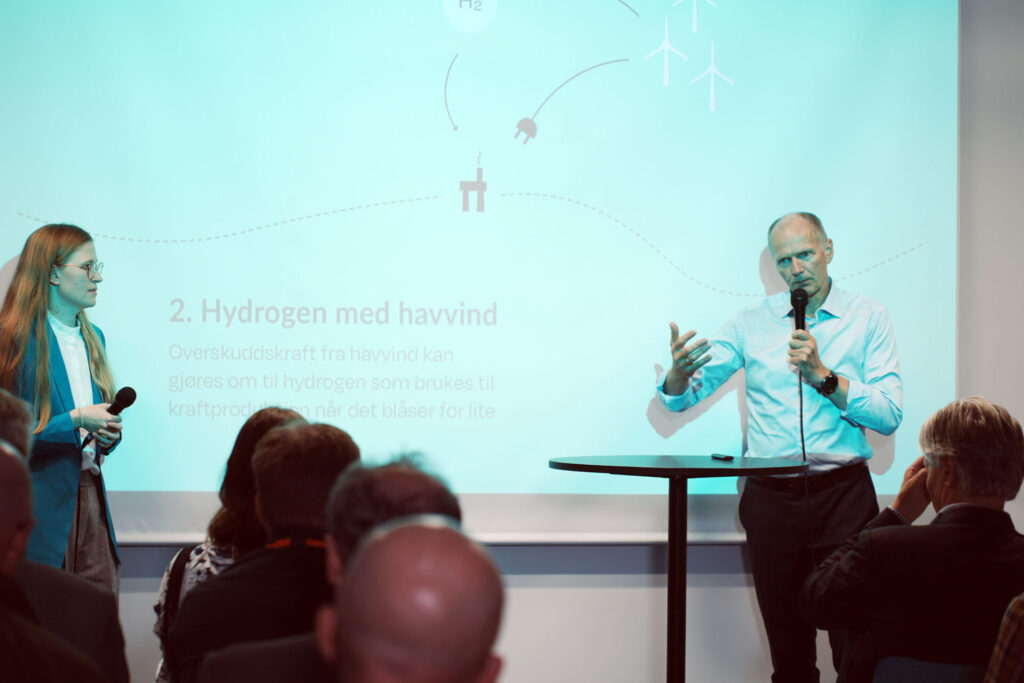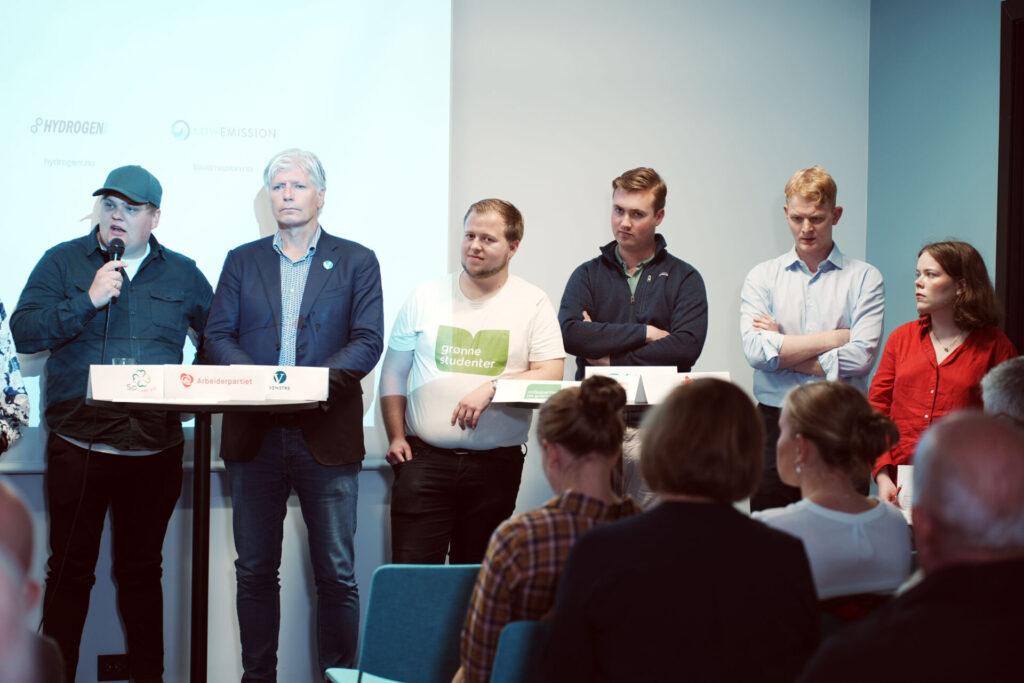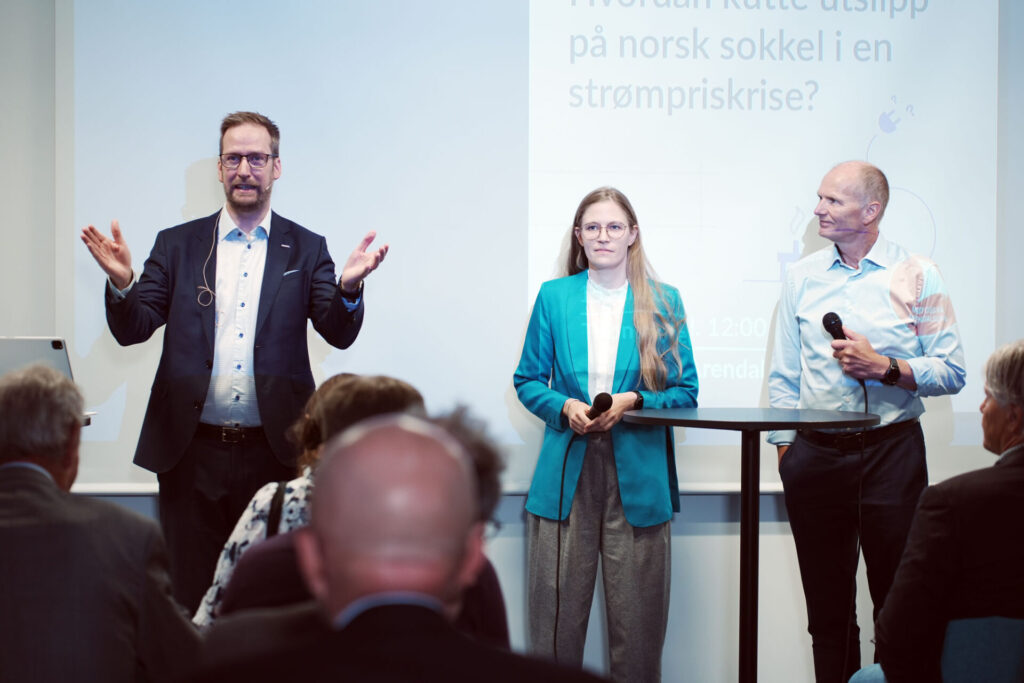The LowEmission research centre aims to reduce offshore greenhouse gas emissions from the Norwegian Continental Shelf (NCS) by 50%. Recently, there has been a lot of discussion about electrification as a means of reducing offshore emissions – but is it the only way? At Arendalsuka this year, LowEmission, together with research centres NCCS, HYDROGENi and NorthWind, presented five possible ways to cut offshore emissions.
To achieve our climate goals, we need to cut our oil and gas emissions
Oil and gas extraction in Norway accounts for over a quarter of the country’s emissions. If we are to achieve our climate goals, we need to cut emissions from the Norwegian continental shelf (NCS). This is the main goal of the LowEmission research centre, which aims to reduce offshore greenhouse gas emissions from the NCS by 50% by 2030, and move towards zero emissions by 2050.
One popular way to reduce emissions is through electrification. Oil platforms need electricity, which currently comes from gas turbines that use the gas produced from oil and gas production. Electrification replaces the gas with power from shore. However, is it the best – or only – method of cutting emissions from the NCS?
At Arendalsuka 2023, an event entitled Hvordan kutte utslipp på norsk sokkel i en strømpriskrise? (“How can we cut emissions on the NCS in a power price crisis”) investigated five other methods for offshore emission reductions. These methods are being actively researched in LowEmission, as well as fellow Centres for Environment-friendly Energy (FMEs) NCCS, NorthWind and HYDROGENi.
“We have other alternatives than just power from land, and we want to have a balanced discussion on which alternatives are realistic and how they can together contribute to and ensure that we achieve our climate goals,” said LowEmission Director Stefania Gardarsdottir.”
Hvordan kutte utslipp på norsk sokkel i en strømpriskrise? took place on 15 August 2023 at Arendalsuka. It was jointly organised by LowEmission, NorthWind, HYDROGENi, NCCS, SINTEF Energy Research and Offshore Norge. The event was divided into two parts, and moderated by Stein Mortensholm from SINTEF Industry.
Arendalsuka (lit. “Arendal’s week”) is a Norwegian political festival that takes place in August every year, in Arendal.
Five ways to cut offshore emissions
In the first part, Stefania and NorthWind Director John Olav Tande explained five potential solutions for decarbonising the NCS:
- Offshore wind – Connecting offshore wind farms to oil and gas facilities as well as to shore could fully electrify the NCS, contribute renewable power to the grid, and help develop wind technology, such as floating wind turbines.
- Hydrogen with offshore wind – In cases where the oil and gas facilities are so far from shore that cables from land aren’t possible, a back-up is needed for days when there is little wind. Hydrogen can be produced from excess wind power, and stored until it is needed.
- CCS (with hydrogen) – Hydrogen can also be produced from the natural gas to power the facilities. When used in combination with carbon capture and storage (CCS), the associated CO2 emissions with creating hydrogen are stored permanently underground, making it emissions free. Both hydrogen production and CO2 storage can take place close to oil and gas facilities.
CCS on natural gas turbines without hydrogen production can also be used as a separate measure for reducing offshore emissions. - Energy efficiency – There are a number of energy efficiency measures that can be used together or separately to result in significant emissions reductions, such as ways to reuse waste heat.
- Power from land – Electricity from land can fully electrify the NCS, but the large amounts of energy needed and increasing energy needs on land mean this can result in a more strained power balance.
“It’s not a “one-size-fits-all” solution,” said John Olav. “You have to examine each field individually to see which measures are a good idea and choose a combination.”

50% emissions reduction: possible but difficult
Benedicte Solaas, director of climate and the environment at Offshore Norge (Norway’s oil and gas association) then gave an industrial perspective on ways to decarbonise their offshore facilities on the NCS. In particular, she referenced the annual status reports produced by Offshore Norge, which measure the petroleum industry’s progress to reaching their climate goals. The most recent report, published for June 2023, stated that that the 50% emissions reduction is still possible “but challenging”, and described electrification with power from land as the most important measure for achieving this.
“But the companies are also working with many other measures, some of which have been mentioned here. Energy efficiency, for example, and reduced flaring, is – after electrification with power from land – the measure that can cut the most emissions. It is estimated that towards 2030, energy efficiency measures can reduce emissions by 700,000 tonnes,” she said.

Benedicte was also asked about Equinor’s decisions to postpone their Trollvind project, which aimed at electrifying the Troll and Oseberg oil fields with a large floating offshore wind farm, and was seen as a solution to electrification not causing a shortage of power on land. Benedicte emphasised that Trollvind was not cancelled, just “delayed”.
Concluded with a political debate
The second part consisted of a political debate, featuring Ola Elvestuen (Venstre – the Liberal Party of Norway), Gaute Børstad Skjervø (Arbeidernes ungdomsfylking – Workers’ Youth League in Norway), Christopher Hermansen (Grønne studenter – Norwegian Green Students), Ola Svenneby (Unge Høyre – the Norwegian Young Conservatives), Ole Jacob Warlo (Fremskrittspartiets Ungdom – the Norwegian Progress Party’s Youth), Liv Müller Smith-Sivertsen (Rød Ungdom – Norwegian Red Youth), and Andrine Hanssen-Seppola (Senterungdommen – the Norwegian Centre Youth).

Watch the event in full on YouTube (in Norwegian with sign language interpretation):


0 comments on “Five ways to reduce emissions from the Norwegian Continental Shelf”